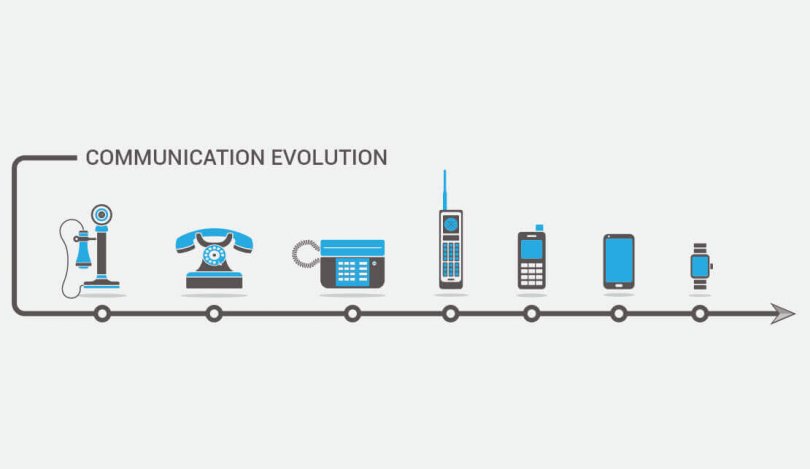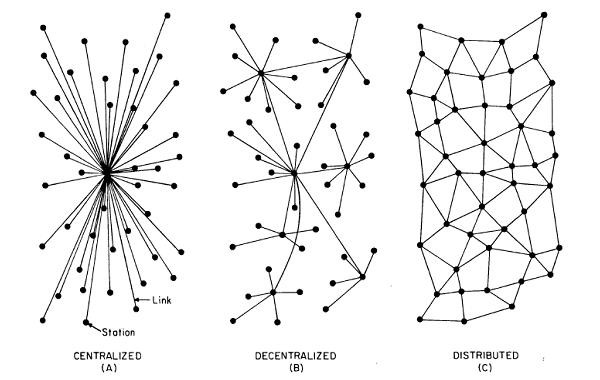Before the telegraph, you had to physically travel to get your message to another person, the iPhone had yet to be conceptualised. Slowly over time, society required information and messages to be sent to others faster. There’s now a demand and need for speed. The only way society could keep up with this demand for speed was and still is to develop new concepts of communication. The creators of the telegraph took the simple idea of communication between individuals and developed a new method of communication that allowed for the message to be communicated faster.

So what are the implications for demanding speed in communication and its associated technology? And how does this affect us in the future?
With any new technology and with the introduction of the telegraph, many, although they liked the idea of faster communication, frowned upon the concept claiming it to be “superficial and sudden” (LaFrance 2014). This invention revolutionised the communication industry. As new technology was developed, the speed at which we could communicate increased, and with each new advancement, users could communicate that little bit easier and faster with one another. All of these technological advancements have led us to where we are today. We have the internet and social media that with a tap or a click can record and send video or text messages instantly.
The need for speed required the development of a network. The need to produce or consume content became crucial. It was important that users could reach a wider audience without a delay. The importance of speed is crucial especially in the context of the stock market. If a stock value changed, it was crucial that those in a different time zone had the knowledge of such an event otherwise a delay could be detrimental and risk ruining the stock market in that time zone. Due to this need and demand for speed and more specifically instant updates within communication, networks were developed.
A network is identified as “a set of actors or nodes along with a set of ties of a specified type that link them” (Borgatti & Halgin, 2011, p. 1169). There are 3 types of networks, centralised, decentralised and distributed. A centralised network drops in speed as it has a central node that if overworked cannot process the demands of users whilst a decentralised network distributes its processing abilities allowing for faster communication. On the other hand, a distributed network distributes its processing across its nodes.

The web also known as the world wide web or www is a network and more specifically takes form as a decentralised network. The demand for speed and instantaneity has risen due to technological advancements in communication which allowed for the decentralised network to be created. A decentralised network also has the capability to allow us to create and produce, interact with and consume its content and therefore providing the opportunity to work at our own time, pace and even location simply based on the concept of the instantaneity of communication that began with the need for speed.
Attention has become a very scarce commodity in the digital age. The attention economy was a term created by Nobel Laurette Herbert A Simon, identifying the term as the “bottleneck of human thought” limiting our perceptions of the environment we are in and what we’re doing in the environment (Ert, H & Sim, 1992). Although there is no quantifiable way of determining attention levels, attention can be measured by the amount of time spent focused on a task. Simon also noted “a wealth of information creates a poverty of attention” suggesting we cannot divide our attention across multiple tasks.
With the constant demand for communication at faster speeds, our apps and platforms have gone in the opposite direction. Users no longer want to watch hours worth of content, rather their attention spans have shortened Wyzowl 2021). This can also be explained through the overwhelmingly large amount and easy access to information that’s aimed at distracting us from our set goals (Paying Attention: The Attention Economy 2020). Social media has done just this. The social media platform, Tiktok has a similar concept to Youtube but its content is maxed at 3 minutes from any content creator. Youtube has decreased in popularity due to the rise of Tiktok as attention spans have decreased. Users’ short attention spans have demanded change within our social media apps.
Sadly at this rate, what will happen in our near and far future if demand for speed in our technology continues?
My prediction for our future is that there will be a time where the overwhelming amount of information presented to us will have to come to halt through media detoxes. The speed and constant overflow of information will become confusing and overwhelming to the point that we will, unfortunately, experience mental strains that will require us to step away and detoxify from the information overflow. My other prediction is seeing that media and communication are growing, the education system will see an introduction of media studies for students. Education and knowledge is key to understanding these platforms. The normal 9 am-3 pm school day will shift to have a focus on how to productively use these platforms and may even change the traditional education system.
The other alternative is more futuristic. The intense desire for instantaneity and continuous upgrades and developments in communication will lead to better methods of connecting to others. This could come in the form of faster travel. If the technology continued to be developed and tested, we could see ourselves connecting to outer space faster. Potentially even having the ability to move between earth and mars at faster speeds. Imagine the concept of teleportation. This has always been a theory and thought but if our demand for speed continues to increase at the rate it’s currently at, this may be a more viable option to connect and communicate with one another. Having the ability to spend the weekend in Greece and then over to France in a matter of minutes or even seconds would be incredible. The tourism industry would thrive on this new technology.

Regardless of the outcome, society’s desire for advancement is very apparent and intriguing to witness and experience. It’s exciting to see the progression and development in the communication industry and the associated advancements in technology that’s occurred thus far, and I wonder if any of my predictions will ever come true. But for now, the need for speed is here and here to stay.
References
Borgatti, SP & Halgin, DS 2011, On Network Theory, ResearchGate, INFORMS, viewed 1 September 2021, <https://www.researchgate.net/publication/228968089_On_Network_Theory>.
Ert, H & Sim, 1992, And, the Bottle Neck of Attention: Connecting Thought with Motivation, viewed 3 September 2021, <http://digitalcollections.library.cmu.edu/awweb/awarchive?type=file&item=46997>.
LaFrance, A 2014, The Atlantic, The Atlantic, theatlantic, viewed 3 September 2021, <https://www.theatlantic.com/technology/archive/2014/07/in-1858-people-said-the-telegraph-was-too-fast-for-the-truth/375171/>.
Paying Attention: The Attention Economy 2020, Berkeley Economic Review, viewed 3 September 2021, <https://econreview.berkeley.edu/paying-attention-the-attention-economy/>.Pierre de Poulpiquet 2017, What is a Walled Garden? And why it is the strategy of Google, Facebook and Amazon Ads platform?, Medium, mediarithmics_what is?, viewed 3 September 2021, <https://medium.com/mediarithmics-what-is/what-is-a-walled-garden-and-why-it-is-the-strategy-of-google-facebook-and-amazon-ads-platform-296ddeb784b1>.
The Human Attention Span [INFOGRAPHIC] | Wyzowl 2021, Wyzowl, viewed 5 September 2021, <https://www.wyzowl.com/human-attention-span/>.
Image References
Greene, T 2018, Tomorrow’s telescopes will be planet-sized quantum teleportation devices, TNW | Science, The Next Web, viewed 5 September 2021, <https://thenextweb.com/news/tomorrows-telescopes-will-be-planet-sized-quantum-teleportation-devices>.
The evolution of mass communication 2019, Crises Control, viewed 5 September 2021, <https://www.crises-control.com/blogs/the-evolution-of-mass-communication/>.
Saurabh Goyal 2015, Centralized vs Decentralized vs Distributed – Delta Exchange – Medium, Medium, Delta Exchange, viewed 5 September 2021, <https://medium.com/delta-exchange/centralized-vs-decentralized-vs-distributed-41d92d463868>.